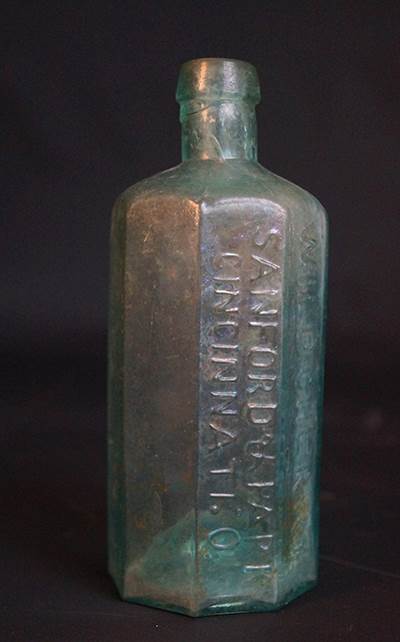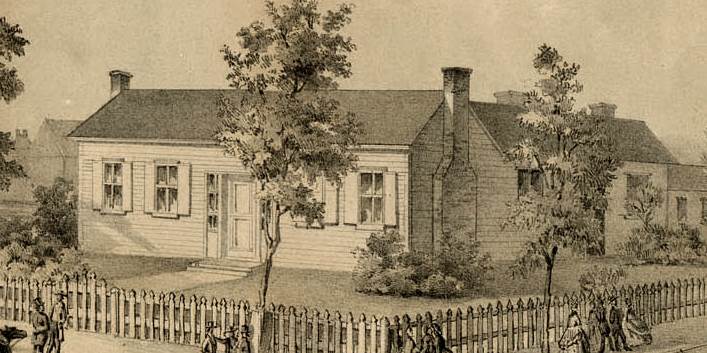By Carla Smith
Rabbit holes. My intern, Keeley Shoudel, goes down rabbit holes when she comes across something unfamiliar in our collections. It is admirable that she takes the time to learn more about whatever items have our attention in the Artifacts Lab. Not only that, it provides an opportunity to discuss what she discovers and collaborate with our colleagues.
A recent inquiry regarding a bottle excavated from a pit at the Lincoln Home in 1952 sent us down one of these holes. We pulled it from storage along with a similar bottle in make and purpose. The requested bottle came from “Dr. Wistar’s Balsam of Wild Cherry Philadelphia.” The second bottle was similar, but it came from Cincinnati and was a little rougher in make and condition. Down the rabbit hole we went.
Bottles can be curious things. There is always the wonder of purpose and if it can be dated. With these bottles, we were in luck. The manufacturing cities and original purpose were stated on each. However, the glass quality was slightly different for each of these. The first bottle was almost entirely clean except for some imperfections and flaws. This bottle also had an additional molded impression of “I.B.” below the “Philadelphia”. Curious but unexplained at this point.
 A patent-medicine bottle found at Abraham Lincoln's home in Springfield (ALPLM)
A patent-medicine bottle found at Abraham Lincoln's home in Springfield (ALPLM)
The other was rougher looking with more evidence of a “burial” with a rainbow hue patina and residual dirt in cracks and crevices.
 A similar bottle but more crudely made and in worse condition. (ALPLM)
A similar bottle but more crudely made and in worse condition. (ALPLM)
Since their condition seemed so different, we asked questions about the first bottle’s origin. We consulted colleagues in the Research Department, particularly Katie Brethorst, to help answer these questions.
The molded “I.B.” was a key that opened the door to the manufacturer’s name (Isaac Butts) and a date range the bottle could have been made. Upon further investigation, a Supreme Court case revealed that Mr. Butts was licensed to make this type of bottle for about ten months from mid-1844 through early 1845. (Not only this but Mr. Butts was responsible for the iconic octagonal shape of the bottle for “Dr. Wistar’s Balsam of Wild Cherry” from that point forward.)
This information dated this bottle to the early years of the Lincoln’s residence on 8th and Jackson in Springfield, Ill.
 An artist's conception of Lincoln's home at it originally looked, before a second story was added (ALPLM)
An artist's conception of Lincoln's home at it originally looked, before a second story was added (ALPLM)
Rabbit holes are very good places to travel with colleagues. They certainly add to the knowledge of the collection. They also generate collegiality and trust between those adventurous enough to explore together.
Carla Smith is the ALPLM registrar.